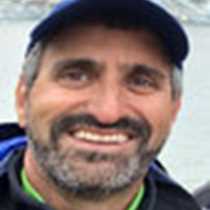This afternoon we sailed amongst a gallery of glassy sculptures of ice. Ever-changing glacial fragments sat heavy in an opaque emerald fjord. With subtle craftsmanship, saltwater, warm temperatures and wind act as performance artists perpetually carving abstract icy works of art. We amazed at fleeting forms of tables, honeycomb, lizards and swans.
Elevations away, improbable snow accumulations perpetuate icy sheets and tongues that ride gravity down through mountain passes, forging concave valleys. In Southeast Alaska and only a few other places on Earth do crevassed blue glaciers survive ablative forces to reach the sea. Tidewater Le Conte Glacier spews forth a myriad of icebergs as its face slowly crumbles in the grasp of the saltwater tides. Newborn frozen rafts ride currents and winds out into a wider bay where we toured, pondered, and photographed by Zodiac.
Icebergs survive up to several weeks melting and floating. As air temperatures slowly affect the exposed 'tip of the iceberg' (a mere 10% of the whole), melting water between ice crystals drains out. Air now trapped in the ice scatters and reflects the complete visual spectrum appearing white to the eye. Meanwhile underwater, saltwater is melting the ice faster than the air does, creating an undermining tabling effect. In time the top-heavy iceberg will roll creating mysterious new forms and lifting denser less air-filled glassy blue ice to the surface.
The mosaic of forms the ice displayed reminded us of other fractals and patterns we experienced in nature today-from the spiraling bark of stunted shore pines, to 2000-year old heart-shaped intertidal fish traps of native Tlingits, to the broad feathered wings of the bald eagle. The beauty of the icebergs reminds us of the multitude of forms that the life force water takes in our natural environment-from hanging misty clouds above a ceaseless rainforest, to the moist spongy blanket of moss in the boggy muskeg, to the convoluted ocean that wraps around broken islands of this archipelago of life.




